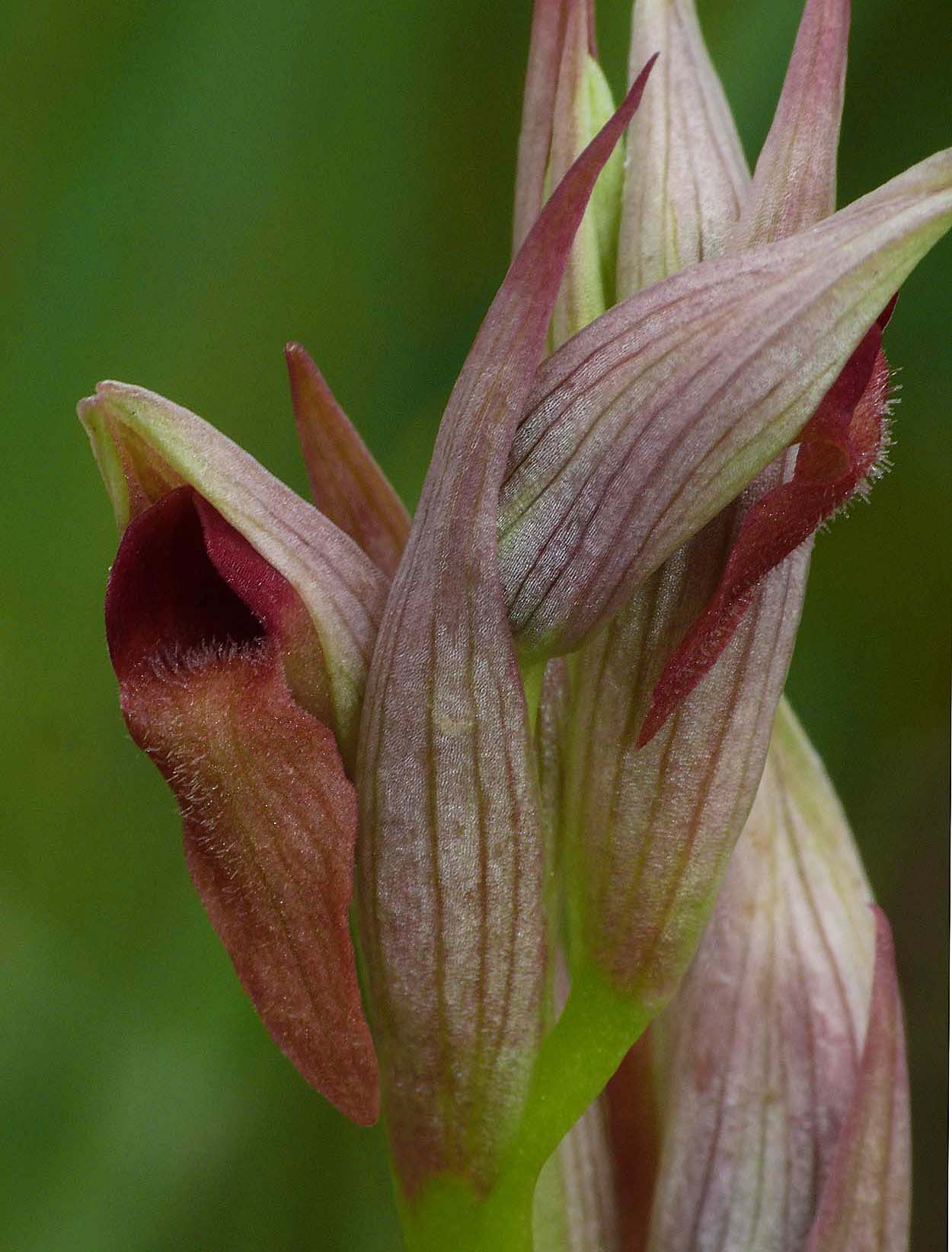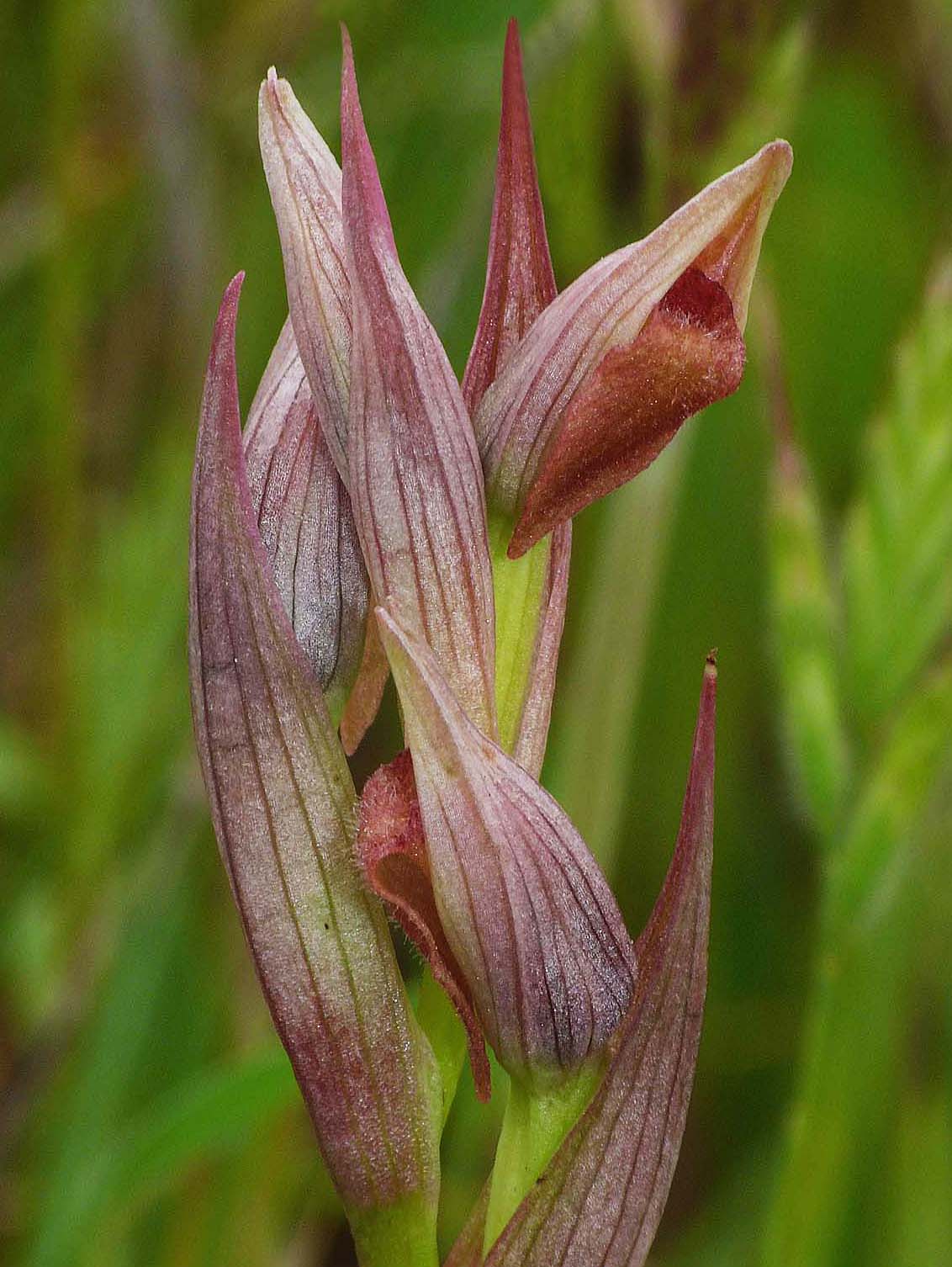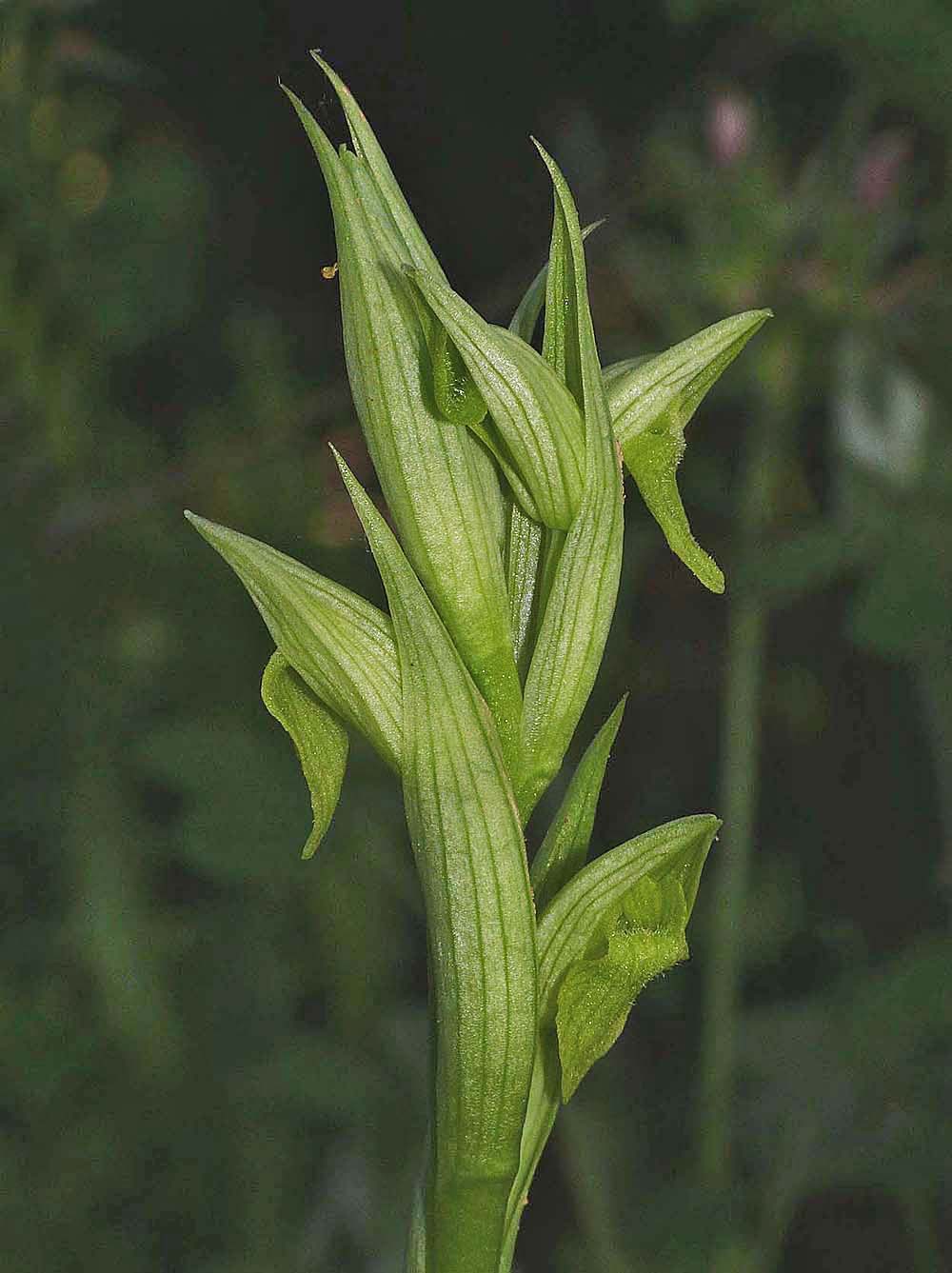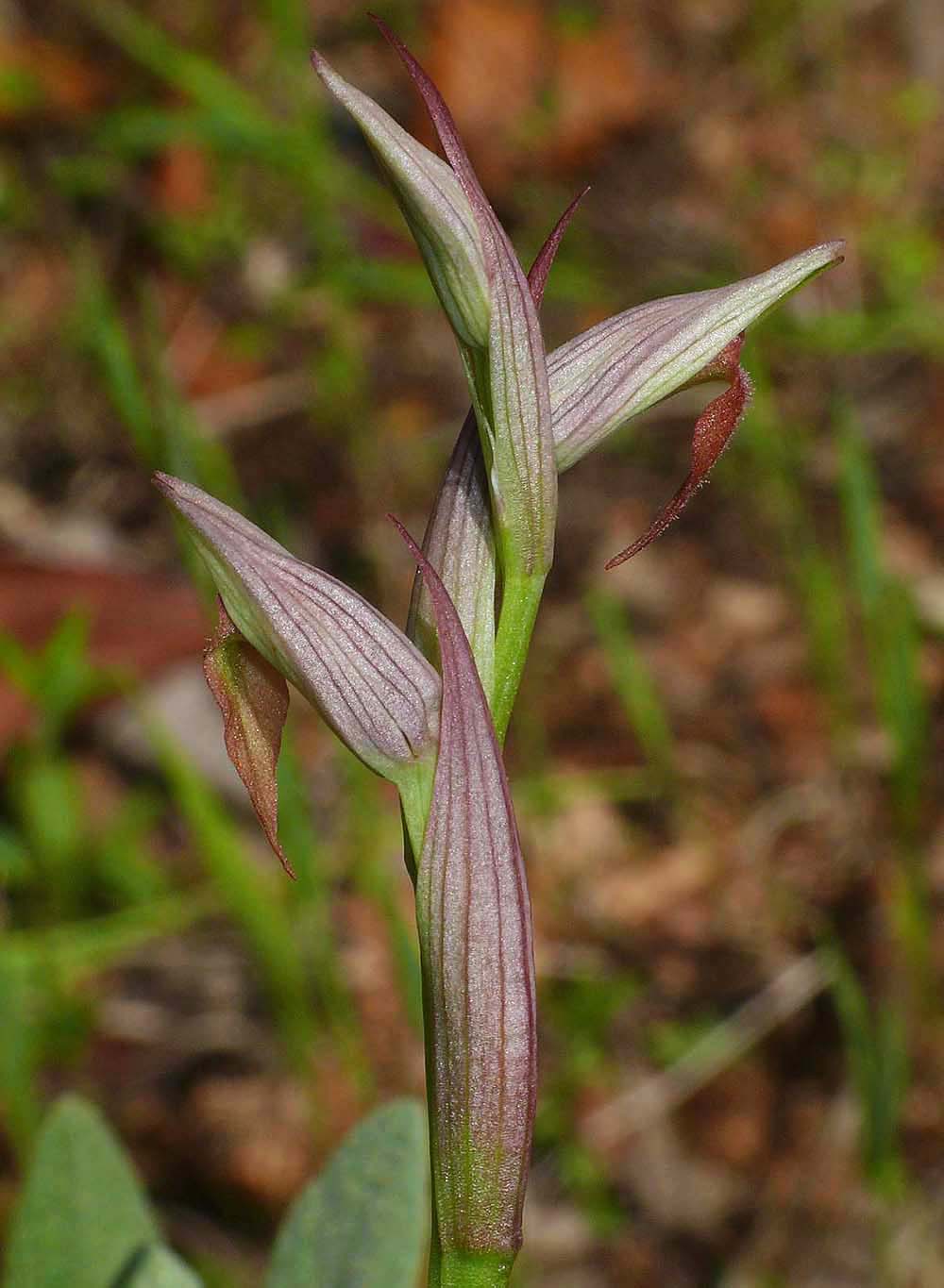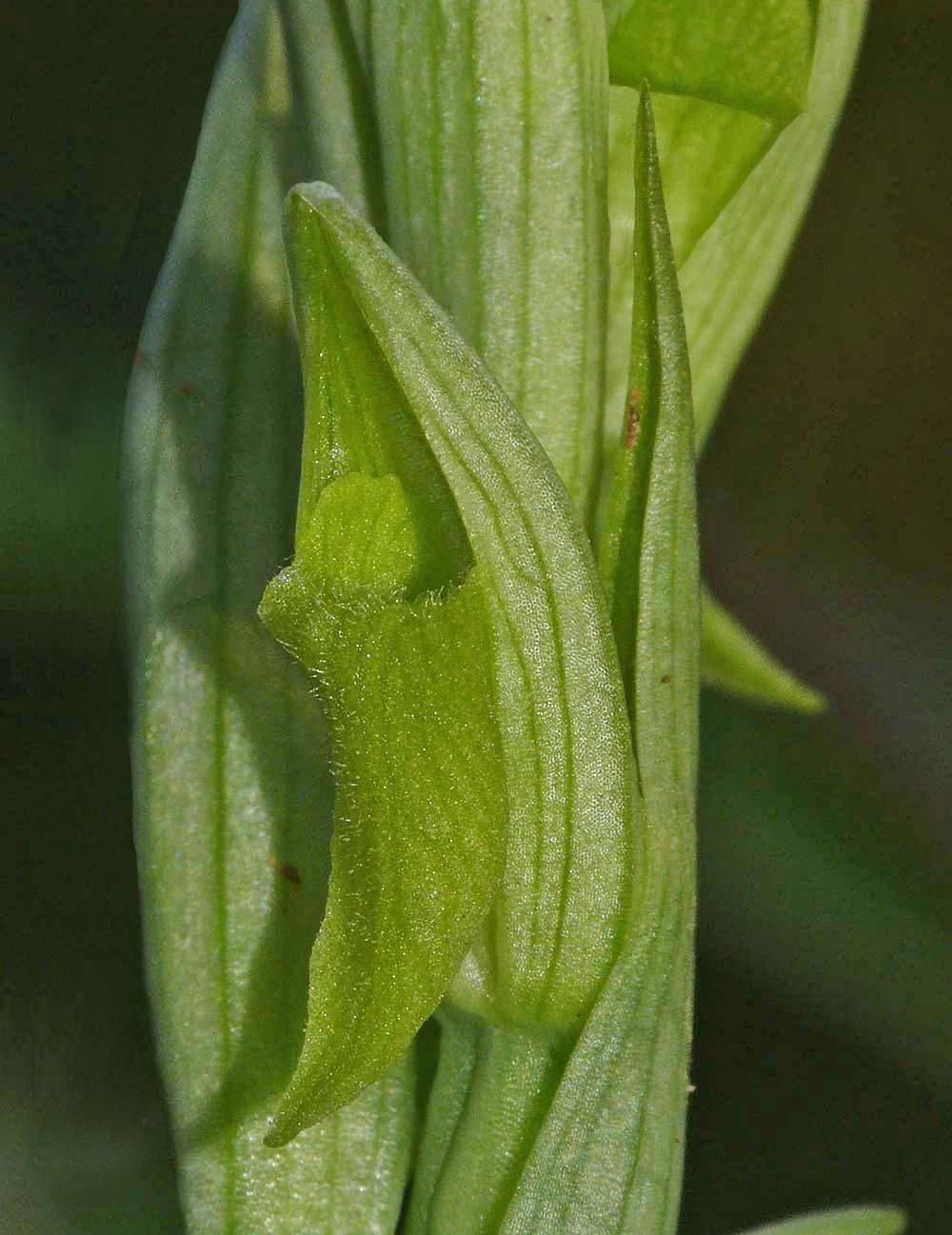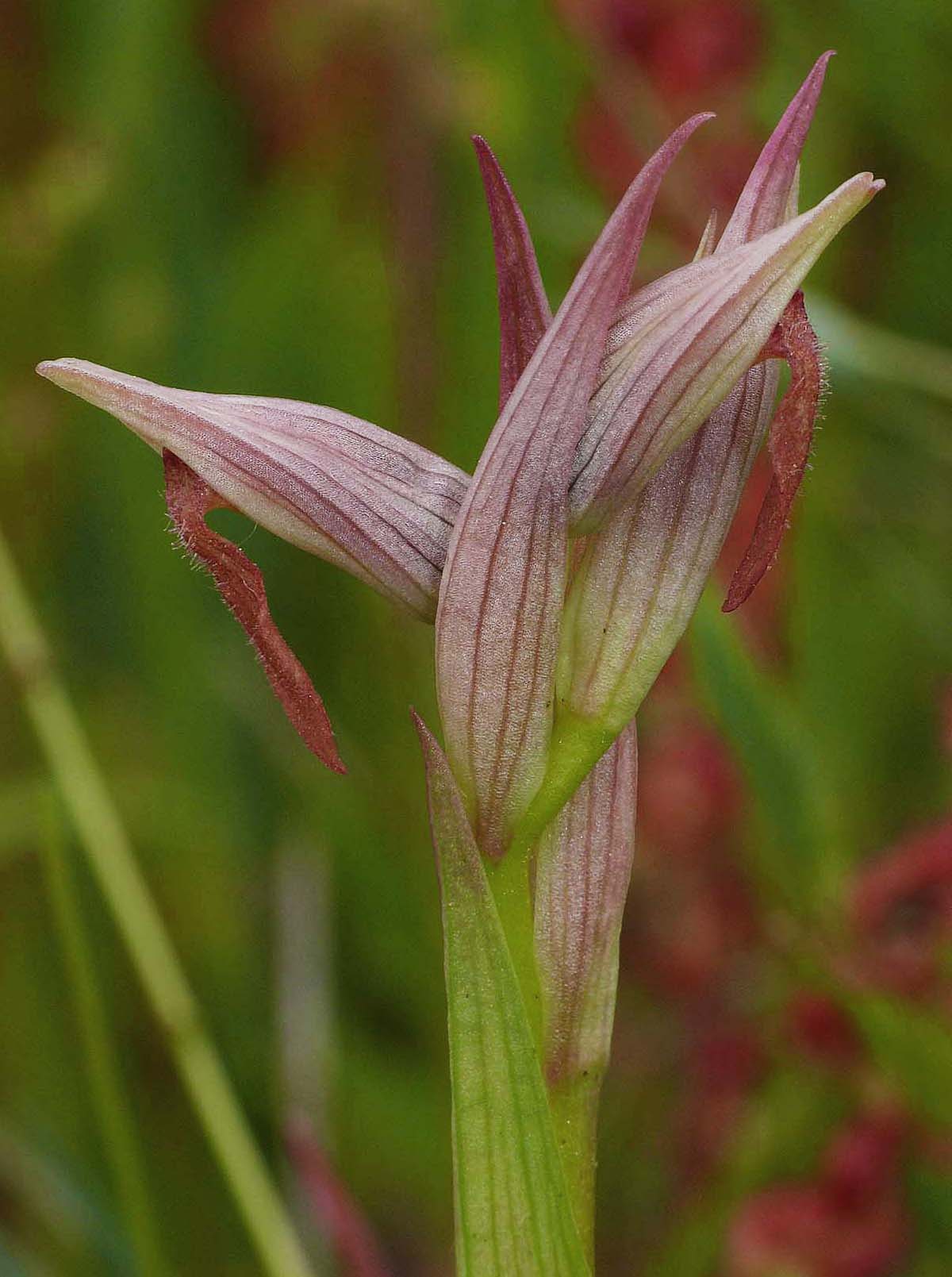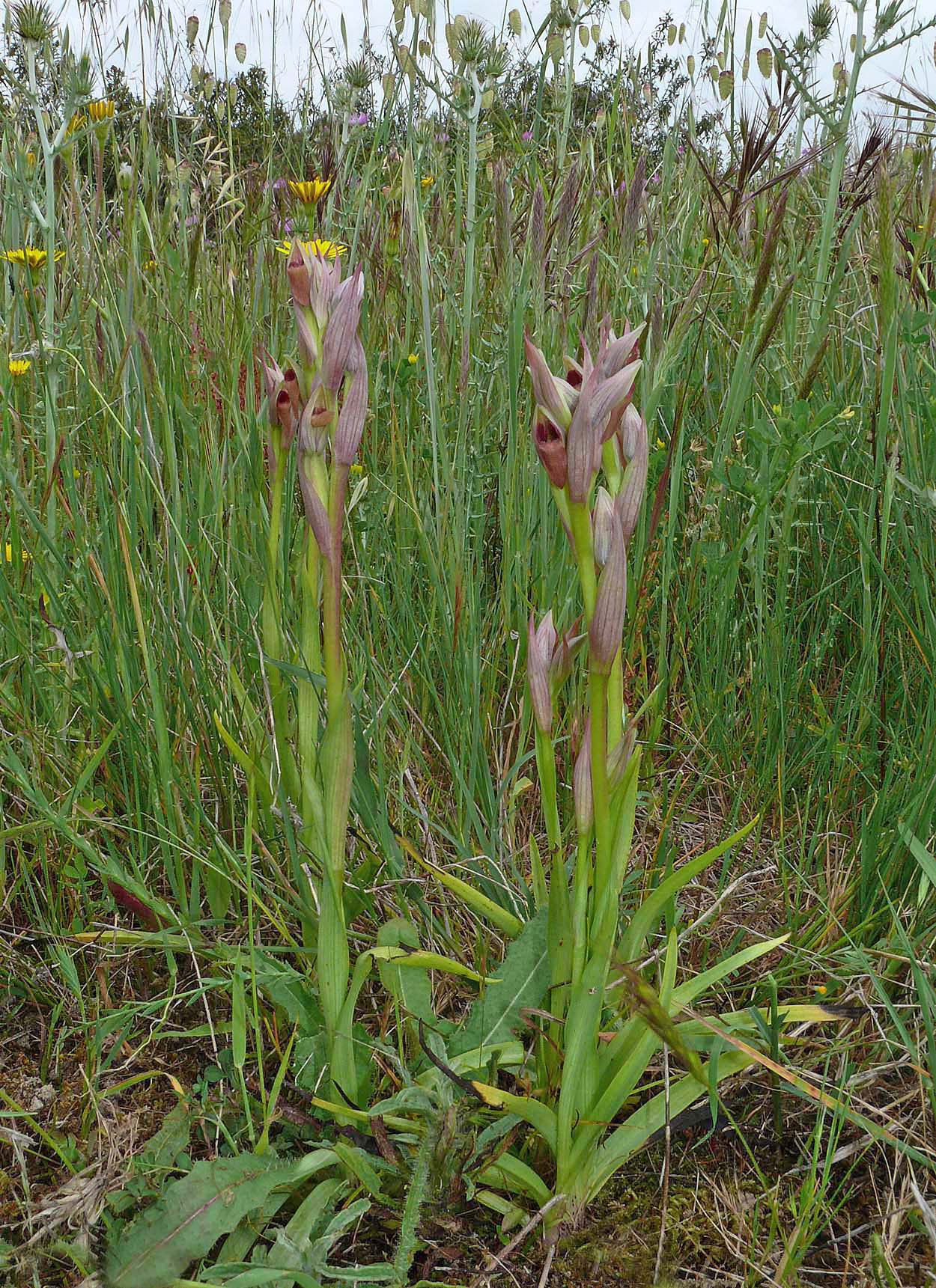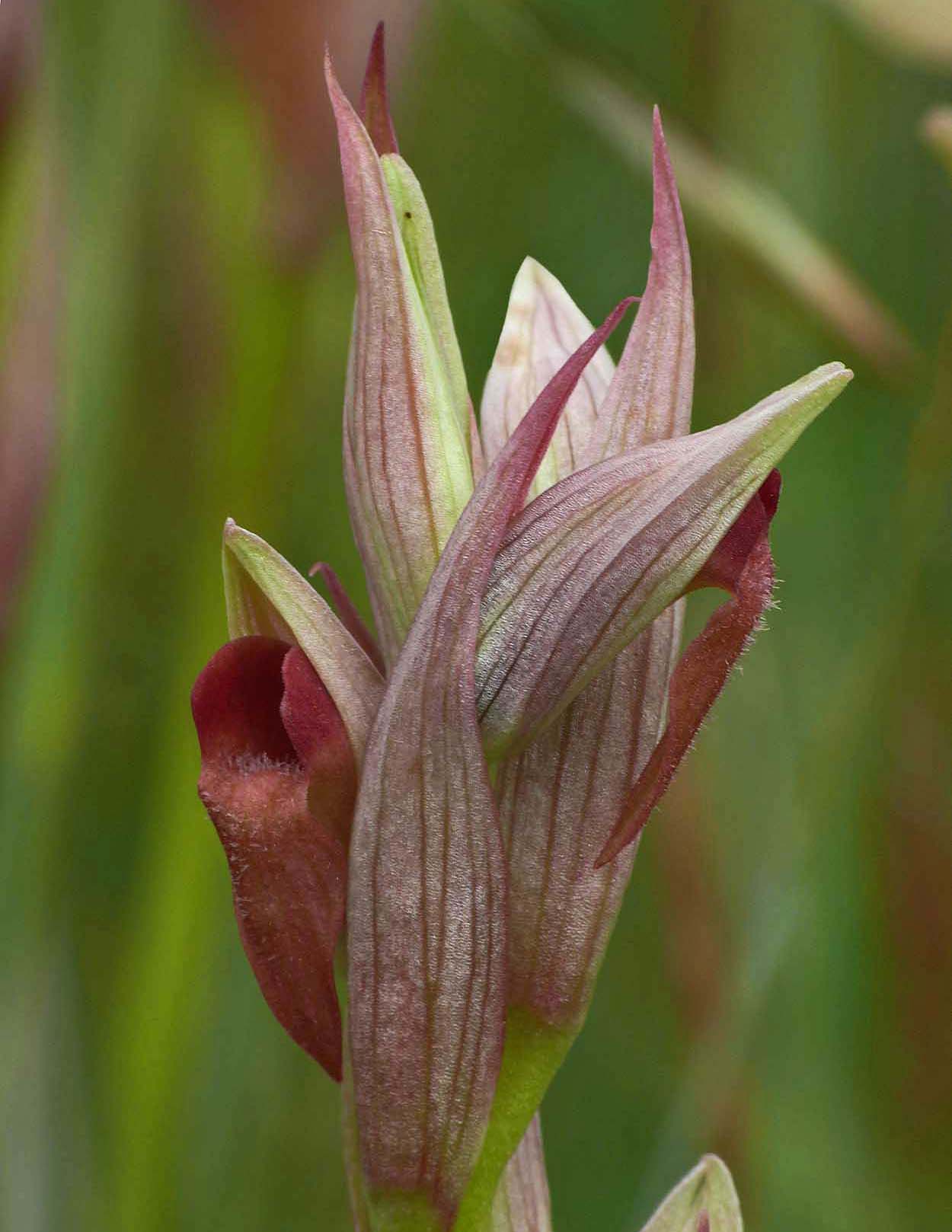S. elsae was first described by Delforge from Extramedura, Portugal in 2004 and was named after his
daughter, Elsa. It is a member of the S. lingua group and although it appears to be intermediate between
S. lingua and S. strictiflora, it
has become stabilized and clearly demonstrates a sufficient number of
individual characteristics to justify species status.
It's distribution is not dissimilar to that of S. strictiflora, being found predominantly in central Portugal and southern Spain. Given that S. lingua and S. parviflora
are also widespread within this range, it's inevitable that
occasional hybridisation will occur, possibly involving all three
taxons. The result of such hybridisation is the production of
swarms of non stabilized intermediates that exhibit various of the characteristics from the different donor species. Certain
identification can therefore be difficult and a further
complication is the potential creation of "lookalikes" whose combination of inherited features mimic, that of true species. S. elsae is a frequently impersonated Serapias and although it obviously has a "type" specification, in the field,
variation can be considerable and misidentification common.
This is an unremarkable species that is slender and few flowered with
bracts whose length generally exceeds the hood. The epichile is
longer and fuller than that of S. parviflora and unlike S. strictiflora,
has a wavy edge. The lateral lobes of the hypochile are usually
red and the tongue itself a lighter, often orange shade.
The picture are fromcentral Portugal and date from the 17th of April.
